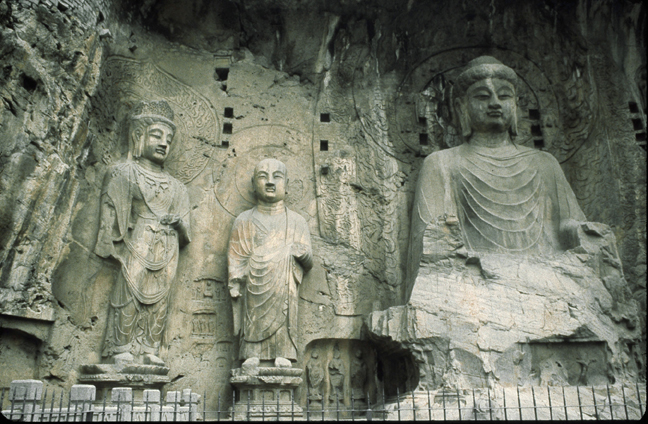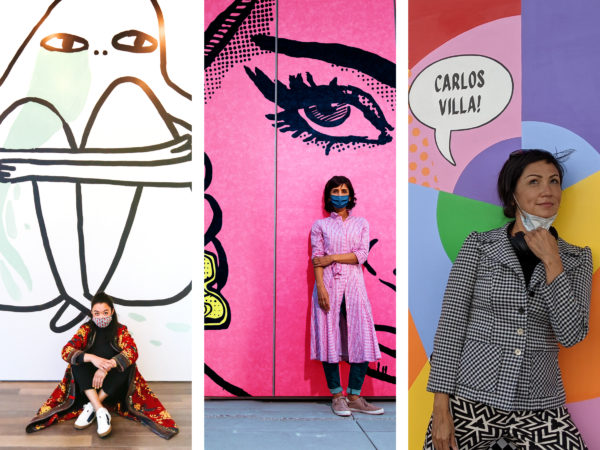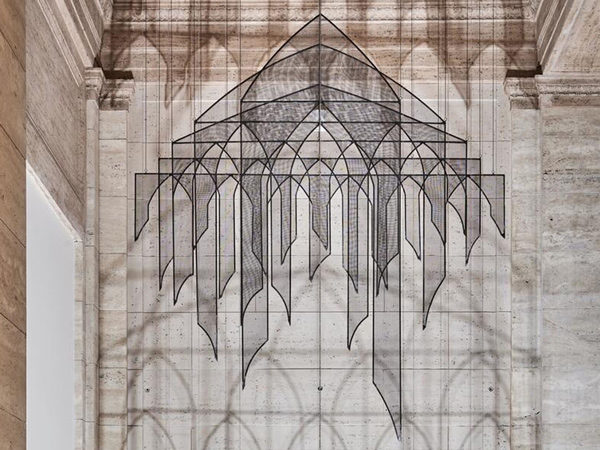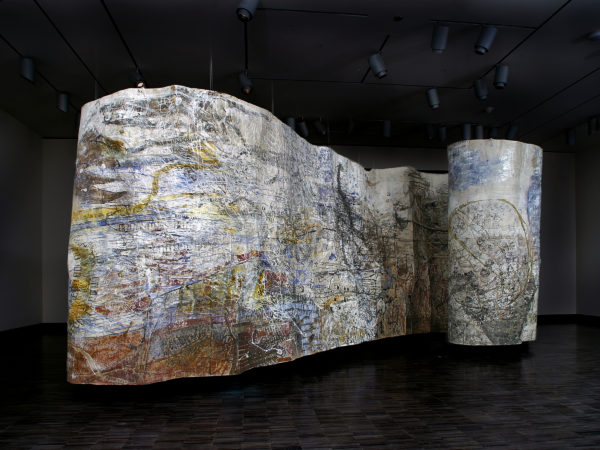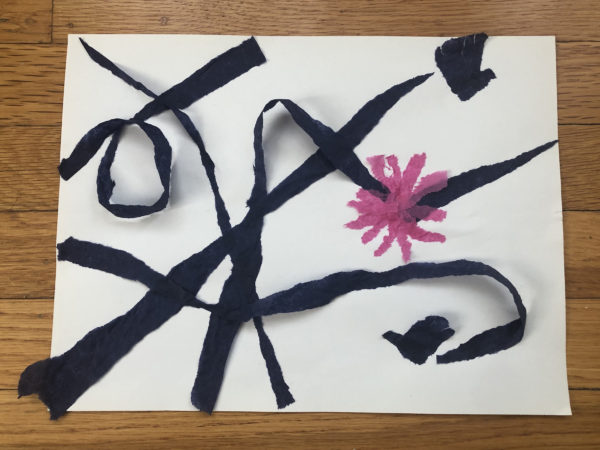Activity
Buddhist Cave Shrines of Longmen

Buddhist Cave Shrines of Longmen
What is this site? Who is portrayed here?
The long horizontal photo shows the expanse of hundreds of caves excavated from the limestone cliffs at a site known as Longmen (Dragon Gates) near the present city of Luoyang. It is now a popular tourist site, and is one of several major Buddhist cave shrine locations where one can see many sculptural art works in their original setting.
The caves were begun just after the Northern Wei rulers—a Turkic people of non-Chinese extraction—moved their capital south to Luoyang in 494 in order to affiliate themselves more closely with the Han Chinese people that they ruled. Several important cave constructions were produced under their supervision at Longmen. During the Tang dynasty (618-906), the large central cave seen in the photo was excavated. (The other photos show details of the main figures in that cave).
Emperor Gaozong (reigned 650–685) and his consort Wu Zetian, who later enthroned herself as empress (reigned 684–704), patronized Buddhist establishments and encouraged the efforts of monks to acquire and translate Buddhist texts from India. One text that arrived during the Empress Wu’s reign was the Avatamsaka (Flower Garland) sutra, one of the longest and most complex of all Buddhist texts. The central figure in that text is the Buddha Vairochana, one of three “bodies of the Buddha” that does not exist in time or space, but transcends all others. The large stone statue of Vairochana Buddha at Longmen was undoubtedly inspired by this text, newly translated into Chinese. It is also is believed to represent the Empress Wu herself, who in 672 had donated 20,000 strings of cash to begin the project, which would take another twenty plus years to complete. Part of one inscription reads “the true doctrine has flown over the east for over seven hundred years, yet this large Buddha niche is the greatest meritorious deed ever offered.”
The temple is commonly referred to as Fengxiansi, after another temple that has since disappeared, and it has also been referred to by one of its inscriptions as the Great Image Niche (Da Xiang Kan). An enormous amount of rock was removed from the rock face, and the resulting statues tower over the viewer. The central Vairochana figure stands about fifty-five feet high, and attendant figures about thirty-five or forty feet high.
On either side of the main Buddha are disciples and richly attired bodhisattva figures. The entire structure was at one time covered with wooden beams and a roof structure, but all that remains of these constructions are the support holes on the surface of the cliff wall.
The central cave at Longmen, built in the late 600s, vividly asserts the union of the concept of Buddha as universal sovereign with the concept of the emperor (or empress) as the living representation on earth of that principal. The pairing of religious and military figures on either side of a large central Buddha may have, for many worshippers, symbolized the religious and military factions that together supported a strong central throne.



